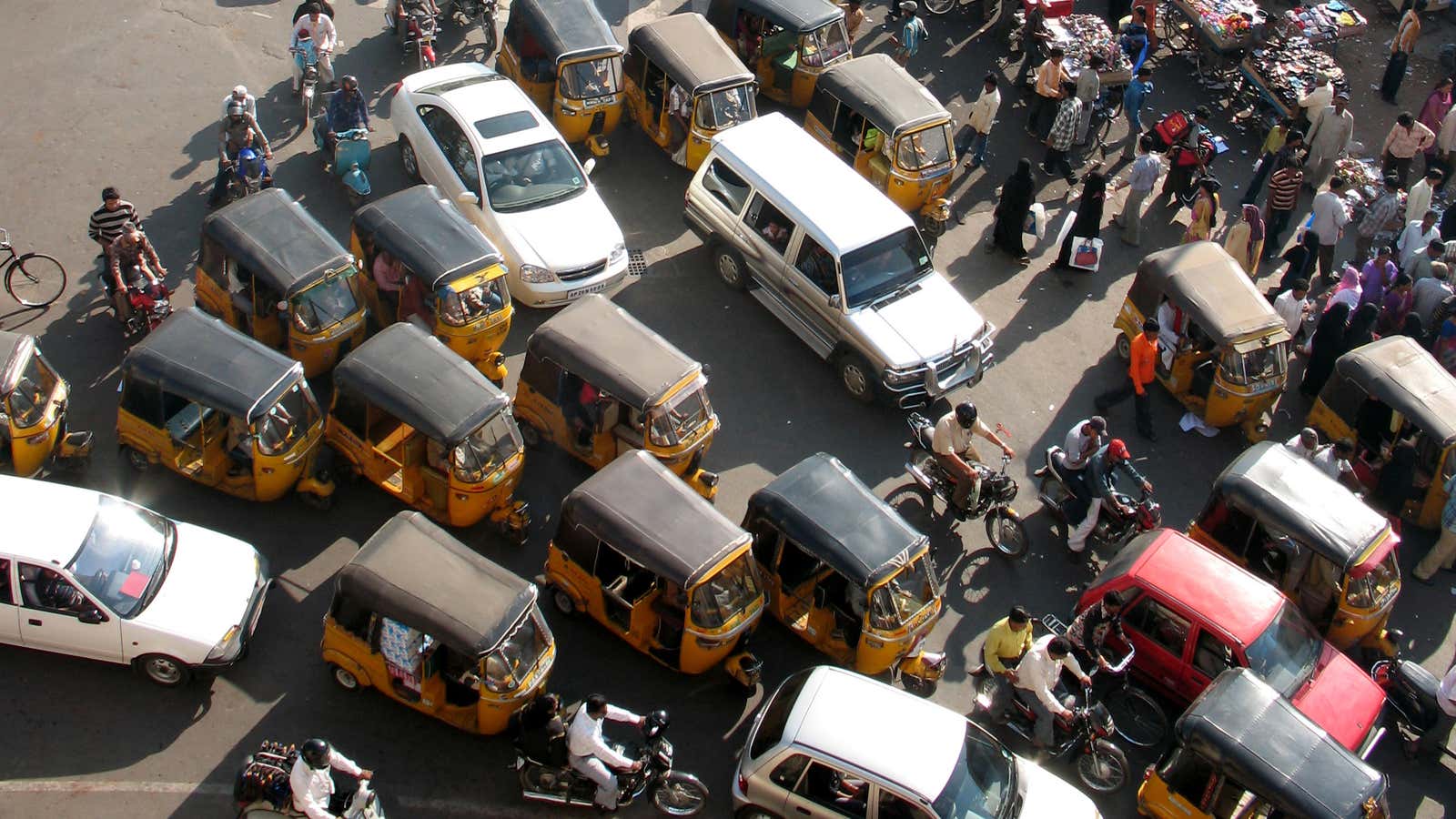Traffic accidents kill 1.25 million people per year, and it’s well-known that those deaths are disproportionately in low- and middle-income countries. Over at CityMetric, writer James O’Malley has added an interesting wrinkle, by showing a correlation between the number of traffic fatalities in a country and the corruptness of its government.
As an example, he uses Romania, a middle-income country that has recently struggled to root out corruption. However, a better example might be Thailand, which has the highest rate of traffic fatalities in the world and where corruption scuttles international trade deals, or Iran, which has nearly as many deaths and where pressure from sanctions is purported to have spawned billion dollar schemes.
It’s easy to look cynically at a chart like this and think, “spurious correlation.” But O’Malley is far from the first person to make this observation. In fact, academics and government researchers have written numerous papers that attempt to explain the relationship between corruption and traffic accidents. Their conclusions aren’t uniform, but together they present a compelling case that there is a real connection between the two.
The one factor that unarguably connects corruption and driving is income. Rates of motor vehicle deaths have an inverted-U relationship with income. Poor countries have few fatalities. As they become wealthier, fatalities increase until income reaches some critical level, after which fatalities begin to decline again. One study puts that turnaround point between $10,000 and $11,000 per capita (paywall). As a result of this common connection to income, traffic deaths and corruption will always be somewhat correlated.
But that isn’t the whole story. Corruption can vary independently of income. A 2010 study found that the level of corruption in a country can moderate or intensify the effects of income on traffic accidents (paywall). The relationship isn’t linear. A poor country with high corruption is relatively safer for drivers, while a rich country with high corruption has more dangerous roads than it otherwise would.
The authors identify several ways that corruption might influence the risk of accidents, such as by undermining infrastructure development, limiting opportunities for economic advancement, or discouraging legal enforcement. It is the last that O’Malley identifies. There are countries where police are powerless or unwilling to enforce the laws, and as a result drivers tend to ignore them.
Another 2010 study found similar correlations between governance and traffic deaths, and then went on to look at cultural factors as well (paywall). Certain cultural values, such as intellectual autonomy, were seen to reduce traffic fatalities. Others, such as having a hierarchical social structure, made them more common. Good governance was found to be an effective moderator of some of those values that would otherwise increase fatalities. In countries with ineffective governments, negative cultural effects are likely to be more pronounced.
None of these correlations can fully explain the mechanism by which corruption influences traffic fatalities. However, numerous different analyses, using different datasets, support the idea that they are somehow connected.
Bottom line: If you’re in a country where everyone drives on the sidewalk and nobody stops at stop signs, you can be pretty sure the government isn’t working right.
The image at the top of this post was shared under a Creative Commons license on Flickr. It has been cropped.
